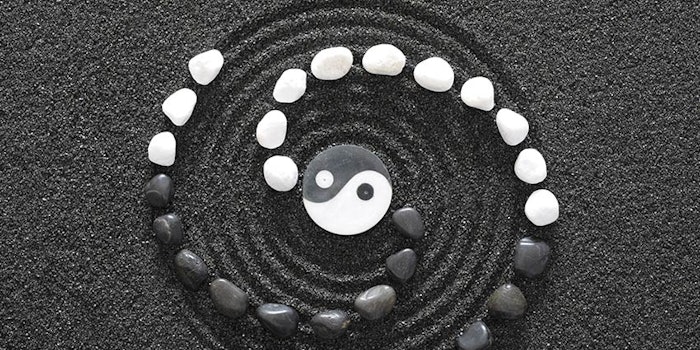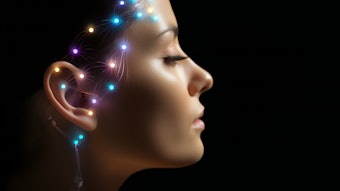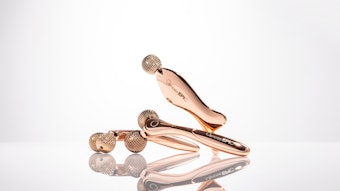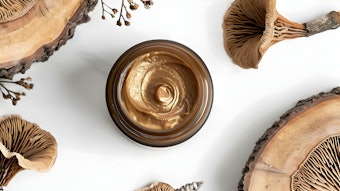
The philosophies and principals of traditional Chinese medicine (TCM) have been a fascination of mine for decades. It began when I was first introduced to face and body reading in a clinical aromatherapy course taught by Eve Taylor, founder of Eve Taylor London.
In Chinese, mien shiang is translated to face (mien) reading (shiang) and is used as a practice of assessing a person’s character, personality and their fortune in Chinese culture. Doctors of TCM may include elements of face reading for diagnostic purposes, along with tongue reading and taking the three pulses on each wrist, each relating to a different organ.
Eastern medicine takes a dramatically different approach to that of the west. Western medical practices are based on fixing the isolated part of the body that is “broken.” In the East, they take the view that health and sickness are created by balance and imbalance, and view the body as a whole, knowing that each part has an effect on another. These beliefs stem from the Taoist philosophy that all life occurs in the circle of nature. Nature is one unified system, the Tao, in constant motion, following cyclical patterns and transformations. When elements of nature are in balance, life is harmonic and thrives. When the balance is upset, disease will eventually follow. Humanity cannot be separated from nature; we are nature manifested as people and are subject to the same patterns and transformations.¹
Yin and Yang
It was observed that nature appears to group into pairs of mutually dependent opposites, each giving meaning to the other. The concept of night has no meaning without the concept of day, and the concept of up has no meaning without the concept of down. This concept of yin and yang is fundamental to understanding health and sickness in terms of harmony and disharmony.
In TCM, the body is viewed in terms of yin and yang aspects. A dynamic balance between yin and yang aspects of the body is characterized by a healthy state and an unhealthy state that indicates an imbalance between the yin and yang of the body.
The Five Elements Theory further differentiates this dynamic into five stages of transformation, also observed from the natural world. Water, wind, fire, metal and wood each have a series of correspondences relating to both the natural world and the human body. Fire, for example, corresponds to a climate of heat, season of summer, the organs of the heart and small intestine and the emotion of joy.²
Eastern philosophies believe our internal organs are represented on different parts of the face that also reflect our internal health. As estheticians, we can use traditional face reading to give deeper understanding of why the skin may constantly break out in the same area or why there are such deep lines uncharacteristic for their years.
Forhead
The forehead is typically associated with digestion and, more specifically, the large intestine. Horizontal lines on the forehead indicate an imbalance in digestion. This could be nervousness disturbing smooth digestion or the types of foods being consumed.
When you see breakouts only in the forehead region and have ruled out hair styling products, head-wear or other typical causing factors, this could also indicate imbalance in digestion. Remember, we are not diagnosing; we should always say there could be an imbalance in the digestive system if you would like a professional opinion, I can refer you to a dietician. This region may sometimes show as puffy and red, which is likely to relate to allergies and sinus problems.
Cheeks
The cheek area is linked to the action of respiration, specifically the lungs. The lungs and the skin are often said to be related in TCM, and we know they are intimately connected in the Five Element Theory, as they both belong to the metal element group. Also included in this group is the orifice of the nose.
It is not unusual for clients who suffer with asthma to also experience eczema and allergies as well. Western medicine also recognizes the correlation and refers to it as the Atopic Triad because they commonly occur in the same patient. This is an interesting link between the connection of the lungs (asthma), the skin (eczema) and the nose (allergies).
Some people may experience lung stress due to causes such as smoking or vaping, conditions such as asthma or bronchitis or living or working in polluted areas where air quality is low.
The type of signs that may show on the skin of the cheeks are broken capillaries, redness, inflammation, skin irritation and breakouts. The skin and lungs are directly associated with the emotions of grief, trauma or sadness. If a client is currently or has experienced these emotions in the past, it may show itself on the skin with deep nasolabial folds from the nostrils to the corners of the mouth.
Eyes
In face reading, the under-eye area is connected to the elimination system, more specifically to the kidneys. If there is an imbalance of the kidneys, it could be down to a number of reasons. If the body is dehydrated, the kidneys won’t be working as effectively as they should be. This can result in dark circles under the eye area. Alcohol is renowned for its dehydrating effects and can be a contributing factor. Puffiness under the eyes may indicate the kidneys are under functioning. This could be due to genetic factors or diet, especially if a high sodium diet is consumed.
The Five Element Theory links the eyes, liver and gallbladder, along with the emotion of anger. Eve Taylor has observed and reported post-menopausal women often show to have the upper eye lid of the right eye as being droopier than the left.³ This appears to be connected to gallbladder function. In Western medicine, there is a strong correlation to gallbladder imbalances and the female sex hormones estrogen and progesterone.
Another Western medicine connection with the eyes and liver is seen in the case of jaundice, where the whites of the eyes turn yellow due to an excess of the pigment bilirubin. The area between the eyes is also connected with the liver. Typically, one or more deep lines form in this area and could indicate the liver is being overworked. A diet high in red meat and alcohol could be a contributing factor. It’s not unusual for people with this imbalance to have an angry temperament, especially first thing in the morning.
The face can hold stress if there is an imbalance; often, those with a liver imbalance tend to hold it between the eyebrows by pulling the corrugator and procerus muscles in together, which resonates with deep vertical lines known as “elevensies.”
Mouth and Lips
The mouth and lips are also linked to digestion in traditional face reading, more specifically the stomach. Even the shape of the upper lip can determine nervous tendencies. For example, a prominently upturned upper lip may indicate a person that is feeling butterflies in their stomach and give the appearance of a swan gracefully gliding across the water, whereas under the surface they are paddling for dear life.
If the corners of the mouth crack on a frequent basis, this could indicate an imbalance with the stomach or a food intolerance. The lower lip relates to the large intestine and elimination system. This area may be puffy, or cracks on the lower lip on a regular basis may indicate their system is backed up with toxins.
The upper lip area is linked to the organs of reproduction. Hyperpigmentation commonly occurs in this area during pregnancy or may be due to the contraceptive pill. Both conditions involve female sex hormone fluctuations. One of the major meridians (a pathway along which qi flows) that runs from the pelvic floor to the upper lip is called the Conception Vessel. During pregnancy, a dark line of pigmentation forms along this meridian, commonly called the pregnancy line or linea nigra.
The area from the corners of the mouth to the jawline is also connected with hormonal fluctuations, and it is very common for ladies to experience breakouts in this area when premenstrual.
Chin
The chin area of the face is associated with digestion, specifically the small intestines, and breakouts persistently in this area may indicate digestive issues that can be caused by anything from eating foods the body doesn’t like to eating late at night.
A horizontal line across the chin indicates the intestines are compacted. When something is compressed, it will have a harder time functioning correctly.
Including this type of skin analysis takes a holistic view of the client from what they may have inherited (genetics), what they experience (lifestyle, occupation, success and loss) and what they eat.
If you choose to share any findings with a client without causing any alarm, briefly explain that face reading has existed for thousands of years and is rooted in TCM. We need to remain professional and within our scope of practice. We do not diagnose, nor cause alarm to clients. Refer to medical professionals when necessary.
Gaynor Farmer-Katicsis passionate about teaching estheticians how to refine their touch by increasing their repertoire of massage techniques. With almost 40 years of industry experience as an esthetician, massage therapist and educator, her business Enhanced Touch offers both online and in-person training. Find out more at www.enhanced-touch.com.











